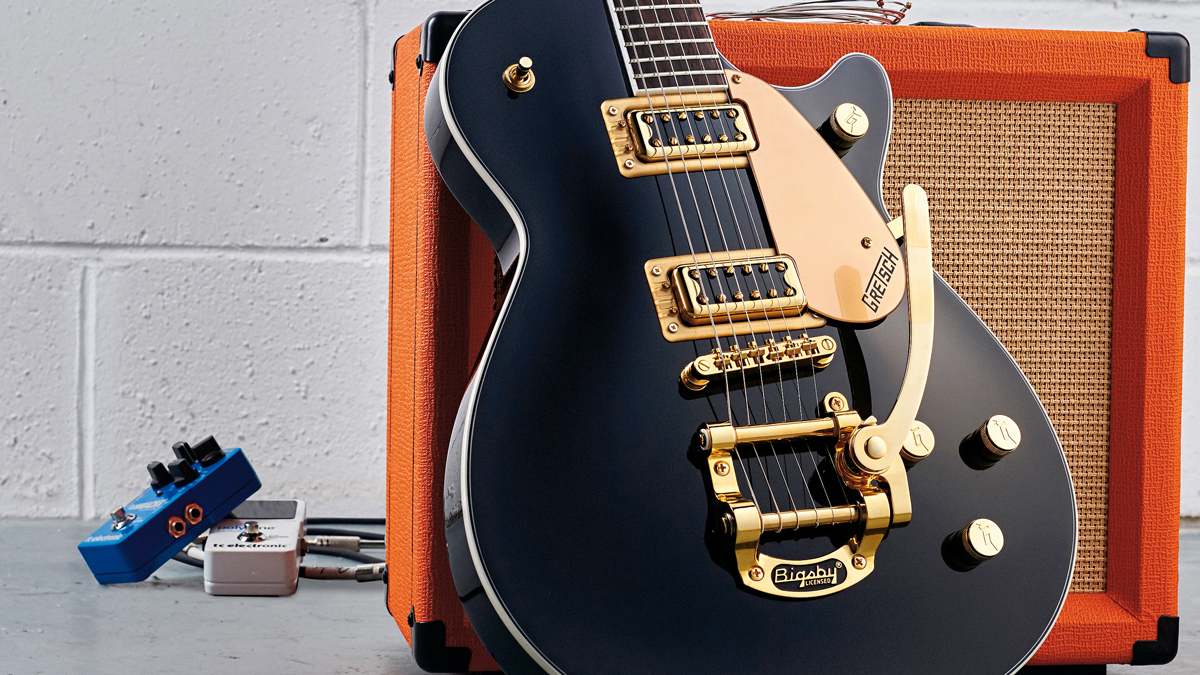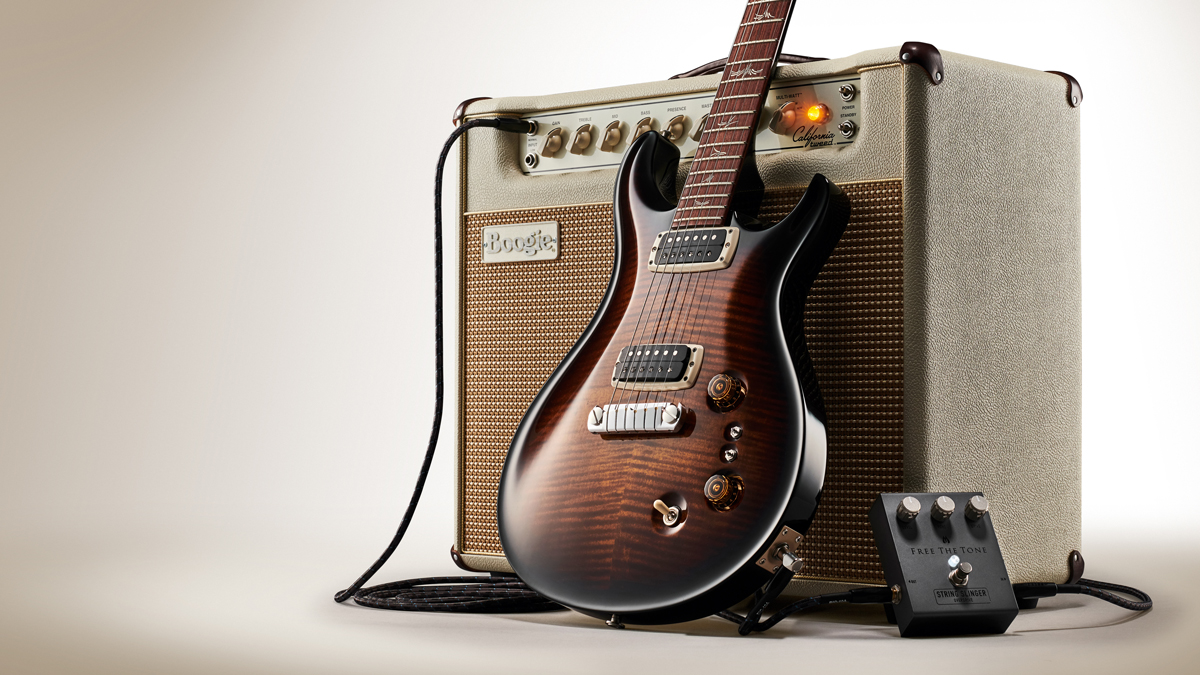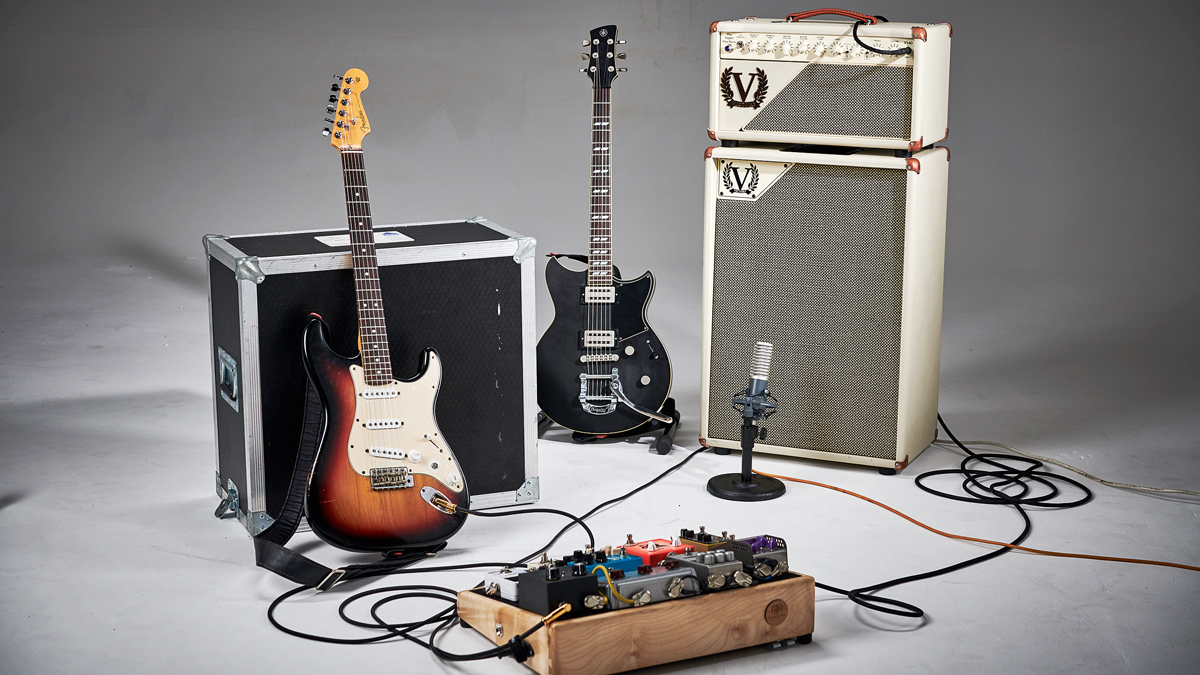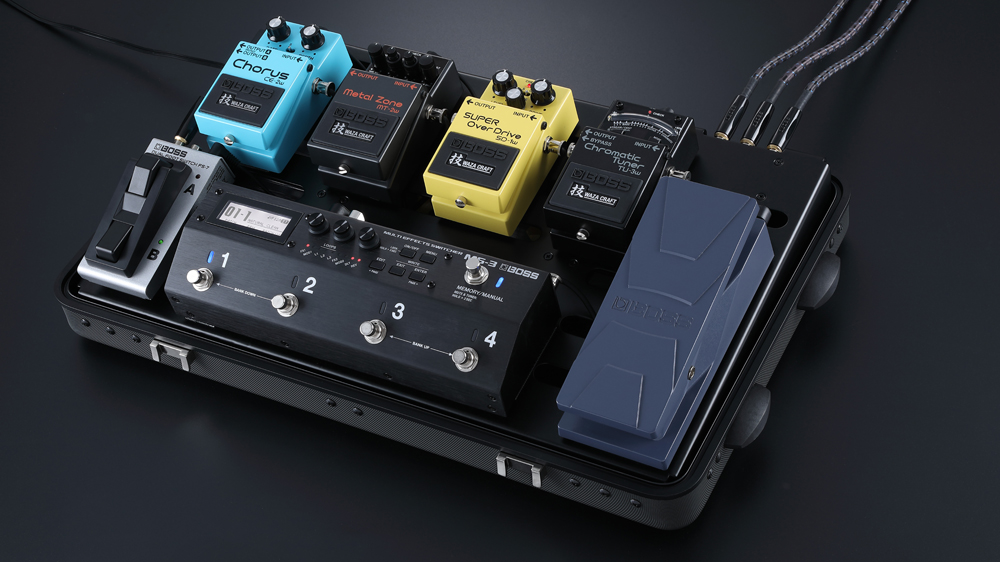How to eliminate guitar buzz, noise and hum from your rig
A step-by-step guide to troubleshooting the cause of noise in your guitar setup and quietening it for good

Noise seems to be every guitar player's nightmare. It can be buzz, hum, hiss, air-traffic control... (This Is Spinal Tap, anyone?)
I'll start off by saying that guitar rigs are a noisy environment to begin with. Gain has a lot to do with noise, but if things are clean before it hits the gain stage, your rig can be quiet (er).
There are so many ways noise can get into your rig. It can be a tangled web. Sometimes noise is just a side effect of what we are trying to achieve, but eliminating noise before it gets amplified will lead to better results in the end.
Make sure your amp has a ground pin on the AC cable and your power source is properly wired and grounded. You can find an AC wiring tester at your local hardware shop for around $10. I carry one at all time. This will tell you if your power source is wired properly and that it is grounded. You really want everything grounded; you don't want to become the ground; that would be bad.
Noise in the live setting
Most times when I'm on tour and having noise issues, it's because the house lighting rig is tied into the same power source as the back-line power. You can hear the lighting dimmers as noise in your amp. When the lights are on 100 percent, the noise goes away. This is poor planning on the venue's part.
I can't tell you how many times I had to make the local crew fix the issue when I was on tour with Lou Reed. He didn't like any extra noise, and who can blame him? In a perfect world, you would have a power source dedicated to back-line with no lighting dimmers plugged in anywhere on the power circuit. Some motorized devices (like fans) also can add noise.
I also find that there can be a grounding issue between the back-line power and audio power. A perfect example is when an acoustic guitar is plugged into a multi-FX box that is plugged into an amp on stage, as well as a D.I. connected to the house console (monitors and front-of-house PA).
Get The Pick Newsletter
All the latest guitar news, interviews, lessons, reviews, deals and more, direct to your inbox!
When the D.I. is not connected, things sound fine. When the D.I. is connected, you get buzz. When you flip the ground on the D.I., your rig sounds fine but the monitors and house PA has buzz.
The stagehand, tech or sound guy/gal puts a ground-lift adapter on your amp, and everything seems OK. But you might be in danger. (Ugh!) This same scenario can happen for just about any D.I. device that also gets connected to an amplifier.

My favorite solution is a passive isolation transformer such as the Lehle P-Split II. I find that this will fix most grounding problems between the stage and house PA in a safe manner.
The P-Split II makes it possible to route an instrument to two amps simultaneously. Sometimes guitar players want to plug into two amps at the same time, so they take the output of a stereo chorus or multi-FX box and plug that into two amps, only to be met with noise. There is a ground issue between the two amps at this point, and most people would just put a ground-lift adapter on one amp.
Do not do this. If you're using a ground-lift adapter on one amp that is connected to the other grounded amp through cable, when you touch both guitar plugs at the same time, you will get a jolt of electricity through your body.
The passive isolation transformer makes it possible to keep your amps grounded while isolating one from the other. It also makes it possible to fix any noise issues you may have when using an amplifier and a D.I. at the same time.
I would urge anyone to invest in one of these; it is a huge problem solver in most situations.
Noise in the guitar rig

I use a process of elimination to achieve the best results. Start off really simple and listen, then add another piece and listen. Start off with your guitar plugged directly into your amp with your settings where you would normally have them.
Make sure AC adapters are far away from your cables. They make noise, and you can hear it just by moving it over your cables. Most wah-wahs are really good at picking up noise from an AC adapter.
Set your amp to a clean sound. If you have noise here, it will only get worse when you kick in the gain channel. Take notice of any buzz or hum. Single-coil pickups will have more noise than humbucking pickups. If you hear noise, try moving around with your guitar. I believe you will find a spot where the noise goes away. This means there is something around your environment that is producing noise that your guitar is picking up.
Environment

(Including but not limited to tube TVs, radio/cell towers, neon signs, maybe even something nextdoor that you can't even see…)
Shielding the electronics cavity inside the guitar can help fight this noise; it can be done with shielding tape. Try a few cables to see if the noise increases or decreases. Some cables are better at rejecting noise than others.
The first preamp tube stage in any tube amp sets the noise standard for things to come, as the signal travels down the road through each pre-amp tube gain stage. Selecting a low-noise pre-amp tube for your first stage will help reduce the noise down the road.
Sometimes noise is a sign of tubes going bad. Power tubes also can produce strange noises. It is important that your amp is biased. Running your power tubes too hot might sound great, but you will decrease the tube life and may introduce more noise.
Again, sometimes noise is just a side effect of what we are trying to achieve, but eliminating noise before it gets amplified will have better results in the end. Once you have an acceptable level of noise with your guitar plugged directly into your amp, I would start to add devices, one by one.
Pedalboard noise

Powering devices by battery has the advantage of isolated ground but the added expense of replacing batteries – and risk of stopping the show when it dies! Powering devices by AC adapter has the advantage of consistent power and cost effectiveness, but the disadvantage of ugly cable runs and ground noise issues when chaining pedals together.
A great alternative to AC adapter chaining or multiple AC adapters is to use an isolated pedalboard power supply with multiple power outputs. Having a multi-output isolated power supply helps overcome ground loop noise associated with chaining power. Each pedal will have isolated ground.
You will have to decide if the noise added is acceptable each step of the way. By dealing with each new noise issue one at a time, you will end up with the best results
It is important that the device you are trying to power receives the proper amount of power.
For example, a device that requires 9vDC 800mA might work with 9vDC 200mA, but you might be adding noise this way.
Now, one by one, add each device and listen to the results each step of the way. It is important to try to keep the levels matched. When the device is activated, you should not get a huge jump in volume (unless the device is meant for that).
If you hear added noise, check your cables and make sure all power adapters are far away! Try running this device with a battery. If this device is still adding noise, It may not be receiving enough power; it may need to be grounded. It may be defective or have a design flaw. It may be time to let this one go!
You will have to decide if the noise added is acceptable each step of the way. By dealing with each new noise issue one at a time, you will end up with the best results.
If none of that works, you might want to either reduce the amount of distortion you're running, or invest in a noise gate pedal.
Matt Brown is a producer, engineer and guitarist for A Pale Horse Named Death (featuring members of Life of Agony, Type O Negative, Biohazard) and Seventh Void (featuring members of Type O Negative). He was also a touring sound engineer for Lou Reed, among many others, and works on the Local 1 crew at Best Buy Theatre in New York City.



![John Mayer and Bob Weir [left] of Dead & Company photographed against a grey background. Mayer wears a blue overshirt and has his signature Silver Sky on his shoulder. Weir wears grey and a bolo tie.](https://cdn.mos.cms.futurecdn.net/C6niSAybzVCHoYcpJ8ZZgE.jpg)

![A black-and-white action shot of Sergeant Thunderhoof perform live: [from left] Mark Sayer, Dan Flitcroft, Jim Camp and Josh Gallop](https://cdn.mos.cms.futurecdn.net/am3UhJbsxAE239XRRZ8zC8.jpg)




